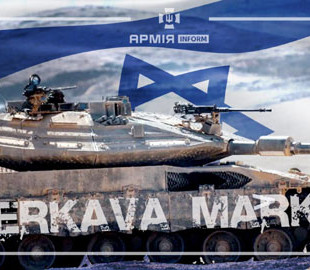The experience of modern wars shows that the time to make decisions in battle is measured in minutes, and sometimes — seconds This especially applies to armored fighting vehicles, tanks that fight at direct fire ranges.
Ways of concealing anti-tank weapons, especially in urban areas, sometimes leave BBM crews with no chance of survival. Therefore, the need for timely identification of dangerous targets becomes a priority task for engineers of defense enterprises of various countries.
The fact is that for operators of modern fire control systems (SUV) of the ground forces, the selection of targets against the background of soil, buildings and vegetation is very difficult task. It is significantly complicated by existing advances in cloaking in all ranges: infrared, electromagnetic, visible.
In light of this, the work of a tank commander to search for, identify and classify targets is not only a difficult task, but also, in the conditions of rapidity and information saturation of modern combat, — a technically very difficult task, which is accompanied by high psychological burdens.
Very often, when asked how this or that target was discovered, the commanders answer: “the spy tipped us off”, “we were lucky”, “if it wasn't for the infantry”. In fact, a literate and experienced tank driver most often detects and identifies targets, guided, primarily, not so much by the technical capabilities of the SUV, but by his own tactical experience and intuitive perception of the battle picture.
But, firstly, there is always a shortage of competent and experienced specialists, and secondly — a competent and experienced opponent will most often work on “breaking the pattern”, placing his equipment not in the ideal places for this (which, most often, are covered with fire “for prevention”), but guided by unpredictable and paradoxical solutions.
So the logical step would be to create a system that enhances human capabilities in the field of target detection and identification. Today, the speed and resolution in various ranges of modern military optronics (optics plus electronics) exceeds human capabilities not by many, but by orders of magnitude. The creation of a system that enhances the operator's capabilities is self-evident.
What does this mean from the perspective of a designer of target detection systems? This means that not the entire visible field of view is monitored, but places where targets can hide, which are advantageous from a tactical point of view for their placement.
Unmasking signs can be, for example, a head in a helmet, which seconds in the vegetation — it unmasks even a perfectly disguised car. It can be the glare of surveillance devices, or the too-correct silhouette of a helmet.
The leading positions in this field belong to the Israelis: several years ago, they developed and developed the “Meil Ruach” active defense complex, which is equipped with the IDF Merkava Mark IV MEM.
This system includes a subsystem that allows detecting the positions of anti-tank weapons. The developer does not specify the principle of detection, but judging by the fact that the positions are detected only after a shot or missile launch — it can be assumed that the basis of the subsystem is the principle of using a radiation detector, the source of which is an open flame.
The flash and emission of thermal energy from the muzzle of a gun or the launch container of an anti-tank complex can be detected by modern means of detection on working distances of a tank gun.
This system is connected to the Barak Zoher (Hebrew — brilliant lightning) UAV, which allows not only to automatically transmit the coordinates of detected enemy positions to the "Makhshev Mesima" (Hebrew — target computer), but also to exchange this information with other tanks of his unit.
This was clearly demonstrated by the battles of the fall-winter of 2023–2024 in the Gaza Strip — in fact, this war was the first combat application of the system.
Today “Makhshev Mesima” is a development of the conventional ballistic calculator. This device operates with artificial intelligence that collects information from many sources. Data received from electrical and optical sensors and tank systems, navigation equipment, as well as from external sources are taken into account — UAVs, digital battlefield systems, artillery reconnaissance data.
The system analyzes and presents a list of targets to the tank commander in real time in order of priority by degree of threat and relevance, and if necessary — is able to suggest which tank of the unit is capable of hitting the target with the greatest probability.
Another rather significant innovation is the integration of the Iron Vision technical vision system into the tank's SUV: video cameras are placed on the tank's tower and hull, the images from which, after processing by a powerful processor, are transmitted to the Iron View VR virtual reality helmet, which allows crew members to perceive the environment as if it were armor the tank does not exist. That is why tankers call such systems "transparent armor".
So, the search process — target detection and preparation for firing takes place in a few seconds. After identifying the threat, the computer solves the ballistic task based on the obtained coordinates of the target and transmits the processed data for firing the weapons guidance drives.
The commander not only receives reliable data, but also recommendations on the optimal algorithm of actions: on the screen the commander's monitor displays an enlarged image of the object from which the threat emanates, recommendations are given on the optimal choice of the type of weapon. In general, the SUV already allows you to respond to enemy fire automatically, without the involvement of a person, but for ethical reasons for now, the right to press the electric release button is delegated to the tank commander.

